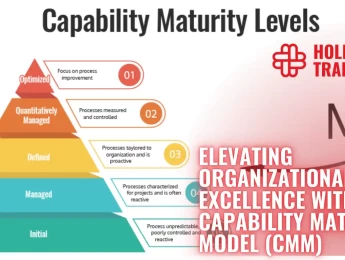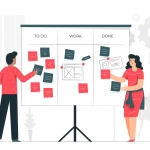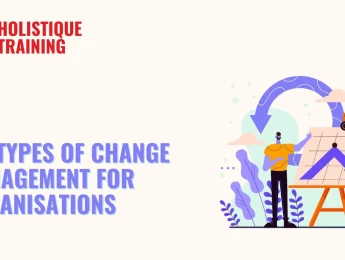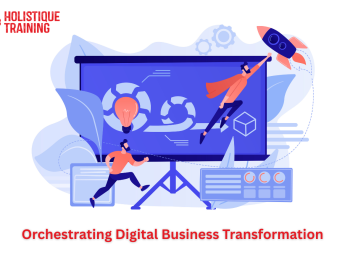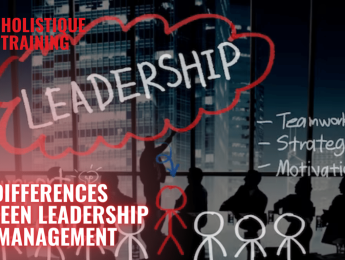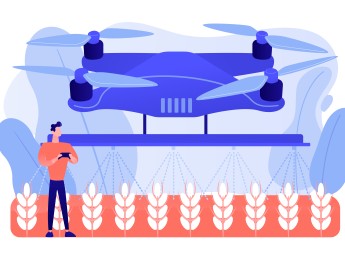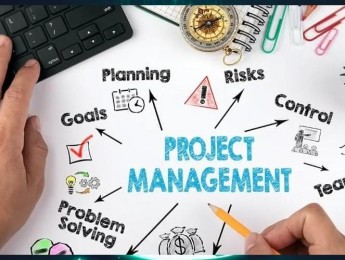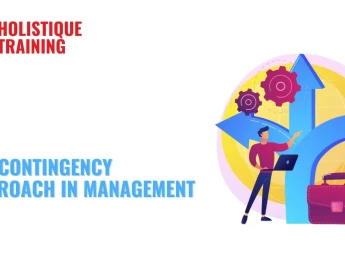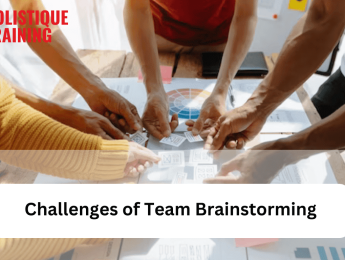- Table of Contents
- Introduction
- What is the Capability Maturity Model (CMM)? How does it work?
- What are the benefits of implementing the Capability Maturity Model (CMM)?
- What are the challenges of adopting the Capability Maturity Model (CMM)?
- What is the future outlook for the Capability Maturity Model (CMM)?
- Conclusion
Introduction
The Capability Maturity Model (CMM) represents a structured framework for assessing and improving the maturity of organisational processes across various industries. Developed by the Software Engineering Institute (SEI) at Carnegie Mellon University, the CMM provides a roadmap for organisations to enhance their capabilities, optimise processes, and achieve operational excellence. Originally designed for software development, the principles of CMM have been adapted and applied to project management, service delivery, and other domains to drive continuous improvement and ensure consistency in process performance. In this article, we will explore the fundamentals of the Capability Maturity Model, its key components, benefits, challenges, and the future outlook of this influential framework in shaping organisational success and competitiveness.
What is the Capability Maturity Model (CMM)? How does it work?
The Capability Maturity Model (CMM) is a framework that originated in the field of software development but has since been adapted and applied to various industries to assess and improve the maturity level of organisational processes. Developed by the Software Engineering Institute (SEI) at Carnegie Mellon University, the CMM provides a structured approach for organisations to consistently evaluate and enhance their ability to deliver high-quality products and services.
The Capability Maturity Model (CMM) provides a structured framework to assess and improve the maturity level of organisational processes. It consists of five defined maturity levels, each representing a stage of process evolution and capability. Here's how the CMM works:
- Define the Five Maturity Levels
The CMM defines five maturity levels that organisations can progress through as they improve their processes:
- Level 1: Initial: Processes are ad hoc and chaotic, with no defined structure or consistency.
- Level 2: Managed: Basic project management processes are established to track cost, schedule, and functionality.
- Level 3: Defined: Processes are thoroughly documented, standardised, and implemented uniformly throughout the organisation.
- Level 4: Quantitatively Managed: Processes are measured and controlled using quantitative techniques to manage performance.
- Level 5: Optimising: Continuous process improvement is institutionalised, leveraging data-driven insights and innovation.
2. Assessment and Evaluation
Organisations assess their current processes against the defined maturity levels to identify their current maturity level and areas for improvement. This assessment typically involves evaluating process capabilities, adherence to defined practices, and
- the extent of process integration within the organisation.
3. Set Goals and Priorities
- Based on the assessment results, organisations set goals and priorities for process improvement. They define specific practices and activities associated with each maturity level they aim to implement to advance their process maturity.
4. Implement Process Improvements
- Organisations implement targeted process improvements that are aligned with the defined practices of higher maturity levels. This may involve establishing standardised processes, defining roles and responsibilities, implementing quality assurance measures, and adopting best project management and software development practices.
5. Monitor and Measure Progress
Organisations continuously monitor and measure their progress throughout the implementation of process improvements. They use key performance indicators (KPIs) and metrics to assess the effectiveness of process changes and track improvements in quality, efficiency, and performance.
6. Iterative Improvement
The journey through the CMM levels is iterative and continuous. Organisations revisit their processes periodically, identify new improvement opportunities, and adapt their practices to evolving business needs and industry standards.
7. Achieve Process Maturity and Organisational Excellence
By progressing through the maturity levels of the CMM, organisations achieve higher levels of process maturity and capability. They establish a culture of continuous improvement, drive organisational excellence, and enhance their ability to deliver consistent, high-quality products and services while managing risks effectively.
Overall, the Capability Maturity Model provides a roadmap for organisations to systematically evolve their processes, optimise performance, and achieve operational excellence by advancing through defined maturity levels and adopting best practices tailored to their specific business context.
What are the benefits of implementing the Capability Maturity Model (CMM)?
Implementing the Capability Maturity Model (CMM) offers several significant benefits for organisations across various industries. These benefits stem from the structured approach to process improvement and the focus on enhancing organisational capabilities. Here are the key advantages of implementing the CMM:
- Improved Process Efficiency: One of the primary benefits of CMM implementation is improved process efficiency. Organisations can streamline workflows, reduce redundancies, and optimise resource allocation by adopting standardised and well-defined processes at higher maturity levels. This obtains increased productivity and cost savings.
- Enhanced Product and Service Quality: As organisations progress through the maturity levels of CMM, they establish robust quality assurance measures and best practices. This focus on quality results in higher-quality products and services that meet or exceed customer expectations, improving customer satisfaction and loyalty.
- Reduced Costs and Schedule Overruns: Effective process management and control at higher maturity levels enable organisations to manage project costs and schedules better. By leveraging quantitative techniques for process monitoring and optimisation, organisations can identify and address potential issues early, minimising costly delays and budget overruns.
- Better Risk Management: The CMM emphasises proactive risk management through well-defined processes and data-driven decision-making. Organisations at higher maturity levels can identify, assess, and mitigate risks more effectively, thereby reducing the likelihood of project failures or unexpected disruptions.
- Informed Decision-Making: Implementing the CMM encourages organisations to adopt a data-driven approach to decision-making. Stakeholders can access actionable insights that support informed decision-making and strategic planning by measuring process performance and collecting relevant metrics.
- Increased Stakeholder Confidence: Achieving higher levels of process maturity and capability enhances stakeholder confidence in an organisation's ability to deliver desired outcomes consistently. This includes customers, investors, regulators, and other key stakeholders who rely on the organisation's products or services.
- Organisational Learning and Continuous Improvement: The CMM fosters a culture of continuous improvement and organisational learning. As organisations progress through maturity, they institutionalise process improvement practices, encourage knowledge sharing, and empower employees to contribute to ongoing optimisation efforts.
- Alignment with Industry Standards: Implementing the CMM often requires organisations to align their processes with industry standards and best practices. This alignment enhances competitiveness and ensures compliance with regulatory requirements and industry norms.
- Enhanced Employee Engagement and Satisfaction: Clear process definitions, standardised practices, and defined roles and responsibilities improve employee engagement and job satisfaction. Employees understand their organisational roles and have the tools and support needed to succeed.
- Strategic Business Advantages: Ultimately, implementing the CMM provides organisations with strategic business advantages. It enables them to differentiate themselves in the market by demonstrating a commitment to excellence, quality, and continuous improvement. This can lead to increased market share, business growth, and long-term sustainability.
Benefits of Implementing CMM |
|
Improved Process Efficiency | Streamline workflows, reduce redundancies, and optimise resource allocation, leading to increased productivity and cost savings. |
Enhanced Product and Service Quality | Establish robust quality assurance measures and best practices, resulting in higher-quality products/services and improved customer satisfaction. |
Reduced Costs and Schedule Overruns | Better manage project costs and schedules, identify issues early, and minimise delays/budget overruns through effective process management. |
Better Risk Management | Proactively identify, assess, and mitigate risks using well-defined processes and data-driven decision-making. |
Informed Decision-Making | Adopt a data-driven approach to decision-making by measuring process performance and collecting relevant metrics. |
Increased Stakeholder Confidence | Build confidence among customers, investors, and regulators in the organisation's ability to deliver consistent outcomes. |
Organisational Learning and Continuous Improvement | Foster a culture of continuous improvement, knowledge sharing, and employee empowerment. |
Alignment with Industry Standards | Ensure competitiveness and compliance with regulatory requirements and industry norms. |
Enhanced Employee Engagement and Satisfaction | Provide clear roles, standardised practices, and tools for employees to succeed and increase job satisfaction. |
Strategic Business Advantages | Demonstrate commitment to excellence, quality, and continuous improvement, leading to increased market share and sustainability. |
Table 1: Key Benefits of Implementing the Capability Maturity Model (CMM)
Implementing the Capability Maturity Model (CMM) offers many benefits, from improved process efficiency and product quality to enhanced risk management, stakeholder confidence, and strategic business advantages. Organisations that embrace the principles of the CMM are better positioned to navigate complex business environments, drive operational excellence, and achieve sustainable success.
What are the challenges of adopting the Capability Maturity Model (CMM)?
Adopting the Capability Maturity Model (CMM) can be a beneficial but challenging endeavour for organisations. Some of the common challenges associated with implementing CMM include:
- Resource Intensive: Implementing the CMM requires significant investments of time, effort, and resources. Organisations need dedicated personnel, training programs, and infrastructure to support process improvement initiatives, which can strain budgets and operational capacities.
- Organisational Resistance to Change: Resistance to change is a common challenge when implementing CMM. Employees and stakeholders may be accustomed to existing processes and reluctant to embrace new practices or methodologies, leading to organisational resistance and inertia.
- Complexity of Implementation: The CMM framework can be complex, especially for organisations with limited experience in process improvement. Understanding and applying the principles of CMM, defining process maturity levels, and aligning practices with organisational goals can be daunting tasks.
- Lack of Executive Support: Successful adoption of CMM requires strong leadership and executive support. Without buy-in from senior management, it can be challenging to secure the necessary resources, prioritise process improvement initiatives, and sustain momentum over time.
- Initial Investment vs. Short-Term Returns: Organisations may struggle to justify the initial investment in CMM implementation, especially if the benefits are not immediately apparent or if short-term returns on investment are not realised.
- Cultural Barriers: Organisational culture plays a significant role in the success of CMM adoption. Cultural barriers, such as resistance to collaboration, hierarchical structures, and communication gaps, can impede the effective implementation and integration of CMM practices.
- Sustainability of Improvement Efforts: Sustaining process improvement efforts over the long term can be challenging. Organisations may face difficulties in maintaining momentum, monitoring progress, and addressing evolving business needs and priorities.
- Tailoring CMM to Specific Contexts: The CMM framework is generic and needs to be tailored to suit each organisation's specific context and requirements. Customising CMM practices to align with industry standards, regulatory frameworks, and business objectives requires careful consideration and expertise.
- Limited Expertise and Skills: Organisations may lack the internal expertise and skills needed to implement CMM effectively. Training and developing employees in CMM practices, process improvement methodologies, and data-driven decision-making can be time-consuming and resource-intensive.
- Integration with Existing Processes: Integrating CMM practices with existing organisational processes, tools, and systems can pose technical and logistical challenges. Critical considerations include ensuring compatibility, minimising disruptions, and fostering continuity during the transition phase.
Despite these challenges, organisations that successfully overcome barriers to CMM adoption can reap significant benefits, including improved process efficiency, enhanced quality, better risk management, and increased stakeholder satisfaction. Addressing challenges systematically, securing executive support, fostering a culture of continuous improvement, and leveraging external expertise can facilitate successful CMM implementation and maximise its impact on organisational performance.
What is the future outlook for the Capability Maturity Model (CMM)?
Evolving trends influence the future outlook for the Capability Maturity Model (CMM) in technology, business practices, and organisational dynamics. While the original CMM framework was developed primarily for software engineering, its principles have been adapted and applied to various domains, including project management, service delivery, and organisational processes. Here are key considerations for the future outlook of CMM:
- Integration with Agile and DevOps: As organisations increasingly adopt Agile and DevOps methodologies to enhance flexibility and responsiveness, the CMM framework may evolve to integrate these practices. A growing emphasis is on combining process maturity with agility to achieve continuous improvement and innovation.
- Focus on Digital Transformation: With the rise of digital transformation initiatives, CMM may be applied to assess and improve the maturity of digital processes, data analytics capabilities, cybersecurity practices, and customer experience management.
- Industry-Specific Applications: CMM principles are being tailored to specific industries such as healthcare, finance, and manufacturing to address unique regulatory requirements, quality standards, and operational challenges. Industry-specific maturity models may emerge to complement the generic CMM framework.
- Emphasis on Data-Driven Decision-Making: CMM may evolve to incorporate advanced analytics and data-driven decision-making techniques. Organisations may leverage data analytics to measure process performance, identify improvement opportunities, and drive strategic decision-making.
- Continuous Improvement and Innovation: The future of CMM is likely to emphasise continuous improvement and innovation. Organisations will seek to institutionalise a culture of innovation, enabling them to adapt to changing market conditions and capitalise on emerging technologies.
- Global Adoption and Standardisation: CMM has gained global recognition as a benchmark for process maturity and organisational excellence. Efforts may continue to promote CMM adoption and standardisation across industries and regions, fostering collaboration and knowledge sharing.
- Alignment with Industry Standards and Best Practices: CMM frameworks may evolve to align with emerging industry standards, best practices, and frameworks such as ITIL (Information Technology Infrastructure Library), COBIT (Control Objectives for Information and Related Technologies), and ISO (International Organisation for Standardisation) standards.
- Enhanced Collaboration and Interoperability: Future iterations of CMM may emphasise collaboration and interoperability between organisations and supply chain partners. This could involve assessing and improving the maturity of collaborative processes and ecosystem integration.
- Adaptation to Changing Business Landscape: CMM frameworks must adapt to the evolving business landscape, including remote work environments, distributed teams, and changing customer expectations. Flexibility and scalability will be essential considerations.
- Sustainability and Social Responsibility: There may be a greater focus on integrating sustainability practices and social responsibility into CMM frameworks, aligning with global initiatives for environmental stewardship and corporate social responsibility.
Key Considerations | Future Implications |
Integration with Agile and DevOps | Evolving CMM to integrate agility for continuous improvement and innovation. |
Focus on Digital Transformation | Applying CMM to enhance digital processes, data analytics, cybersecurity, and customer experience. |
Industry-Specific Applications | Tailoring CMM to address unique regulatory and operational challenges across industries. |
Emphasis on Data-Driven Decision-Making | Incorporating advanced analytics to measure performance and drive strategic decision-making. |
Continuous Improvement and Innovation | Cultivating a culture of innovation to adapt and capitalise on emerging technologies. |
Global Adoption and Standardisation | Promoting CMM adoption and standardisation globally for collaboration and knowledge sharing. |
Alignment with Industry Standards and Best Practices | Evolving CMM frameworks to align with emerging standards and best practices. |
Enhanced Collaboration and Interoperability | Improving collaboration and ecosystem integration through mature processes. |
Adaptation to Changing Business Landscape | Adapting CMM to address evolving work environments and customer expectations. |
Sustainability and Social Responsibility | Integrating sustainability and social responsibility into CMM frameworks. |
Table 2: Future Outlook of the Capability Maturity Model (CMM)
The future outlook for the Capability Maturity Model (CMM) is characterised by ongoing evolution, adaptation, and innovation. As organisations strive for operational excellence and competitiveness in dynamic markets, CMM frameworks will continue to play a vital role in guiding process improvement initiatives and driving organisational success.
Conclusion
The Capability Maturity Model (CMM) remains a cornerstone in the realm of process improvement and organisational excellence. Over the years, CMM has evolved from its roots in software engineering to become a widely recognised framework applicable across diverse industries. CMM empowers organisations to drive efficiency, quality, and innovation by providing a structured approach to assessing and enhancing process maturity. As we look to the future, CMM is poised to integrate with emerging trends such as Agile, DevOps, and digital transformation, ensuring its relevance and effectiveness in dynamic business environments. Embracing the principles of CMM enables organisations to navigate complexity, mitigate risks, and continuously elevate their performance towards achieving strategic objectives and delivering value to stakeholders. In essence, CMM embodies a commitment to excellence and continuous improvement, shaping the future of organisational success.


